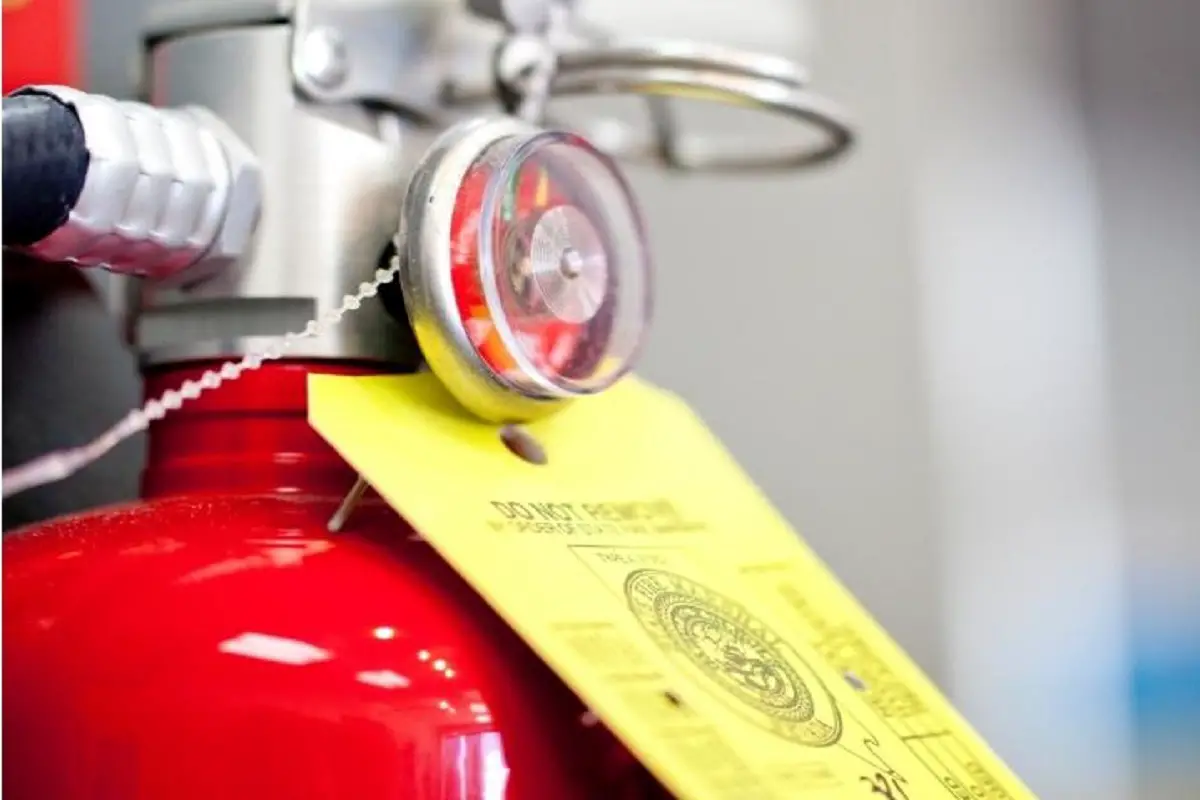Fire extinguisher tags and labels provide crucial information to users about the fire extinguisher. In times of emergency, this information can be critical to helping someone stay out of danger. So, is it illegal to remove a fire extinguisher tag or label? Find out below.
Why Are Fire Extinguisher Labels and Tags Important?
Fire extinguishers are firefighting devices that contain fire suppressants . They save lives and property by putting out or containing fires. A fire extinguisher can save your life, but only if you know how to use it correctly. Fire extinguisher labels and tags contain vital information about its contents, frequency of maintenence, and usaege steps.
Is It Illegal To Take Off a Fire Extinguisher Label?
Yes, if you do not own the fire extinguisher, taking off or damaging a fire extinguisher label is considered tampering or tresspassing, and could be punishable by law. This could result in a misdemeanor charge, fine, or both. The reason is, even the label of a fire extinguisher is considered property of the owner.
Labels of fire extinguishers are there for good reason. They provide the fire extinguisher user with safety information regarding use and chemical contents.
What Info Do Fire Extinguisher Labels Contain?

Fire extinguisher labels usually contain the following information:
- Instructions for use
- The type of fire extinguisher it is (class A, B, C, etc.)
- Types of fires to use the extinguisher on
- Types of fire NOT to use the extinguisher on
- Contents (foam, water, CO2, etc.)
- ANSI / UL standards that it meets
- Product number and bar code
Even if you own the fire extinguisher, it is not a good idea to remove or damage the label. This can provide you with crucial information in a time of emergency. In fact, if you own a fire extinguisher with a damaged label, it would be wise to replace the fire extinguisher with a new one.
Useful Fire Extinguisher Tags / Labels
Frienda 50 Pieces Monthly Fire Extinguisher Inspection Tags Record 4-Year Maintenance Tags
Is It Illegal To Take Off a Fire Extinguisher Tag?
Similar to fire extinguisher labels, tags are important holders of useful information that can be critical during an emergency. These are treated as property and damaging them is a legally punishable offense. They are usually colored white or yellow and contain red and black text. Tags are attached to the top or handle of the extinguisher. They may also have a “Do Not Remove This Tag” stamped on them.
What Info Do Fire Extinguisher Tags Contain?
Fire extinguisher tags contain the following information:
- Fire extinguisher recharging and inspection record, including specific dates
- Servicing company, person, or organization
- Instructions for use
- Recommended inspection intervals for type of contents (CO2, dry powder, water, etc.)
Laws Pertaining to Fire Extinguisher Tags and Labels
California Penal Code Section 603
California Penal Code Section 603 covers the law regarding entering a premises and damaging property without the consent of the owner, resulting in a misdemeanor charge.
California Penal Code – PEN § 148.4
CA PEN § 148.4 covers punishment related to tampering are injuring fire equipment with maliscious intent, including fire extinguishers.
Different states will have seprate fire regulations regarding tags and labels. For example, The California Department of Forestry and Fire Protection provides a document regarding Fire Extinguisher Laws And Regulations. See relevant section 13183 – Affixing tag to serviced unit.
If you are unsure what the regulations regarding fire extinguisher tags and labels in your area, contact your local fire department or city to find out more.
Standards for Fire Extinguisher Labels and Tags
US Department of Transportation (DOT)
The Department of Transportation regards fire extinguisher contents as toxic in 49 CFR 172.101. This code covers labelling of containers storing toxic chemicals for transport.
DOT code 49 CFR 173.306(c) covers size limits of compressed gas containers, testing requirements, and labeling for transport.
Occupation Safety and Health Administration (OSHA)
OSHA provides Hazard Communication Standard 1910.1200 – sections (f)(5) – f(11), which cover the labelling of containers of hazardous chemicals by the owner or employer, as well as chemical manufacturers.
National Fire Protection Association (NFPA)
NFPA 10 provides information regarding fire extinguisher inspection and record keeping. Particularly, Chapter 4 – General Requirements, covers the information required on fire extinguisher labels and tags.
Fire Extinguisher Tamper Seal Requirements
Fire extinguishers also contain a small plastic tamper seal at the top of the handle. This is 8-10″ long and is affixed around the safety pin of the fire extinguisher to keep it from falling out. The fire extinguisher servicing tag may be attached to the tamper sea as well.
NFPA 10 – Tamper Seals
NFPA 10, section 7.3.2.2 discusses tamper seal requirements with regards to fire extinguisher servicing. It also states that if a tamper seal is missing or damaged, a new one must be applied by a licensed professional.
To Close
Laws and standards regarding toxic chemical containers exist for good reason, so tampering with their labels does not enhance safety and can be punishable by law. So, if you see a fire extinguisher mounted on a wall, avoid tampering with it in any way and replace one that has been damaged.
